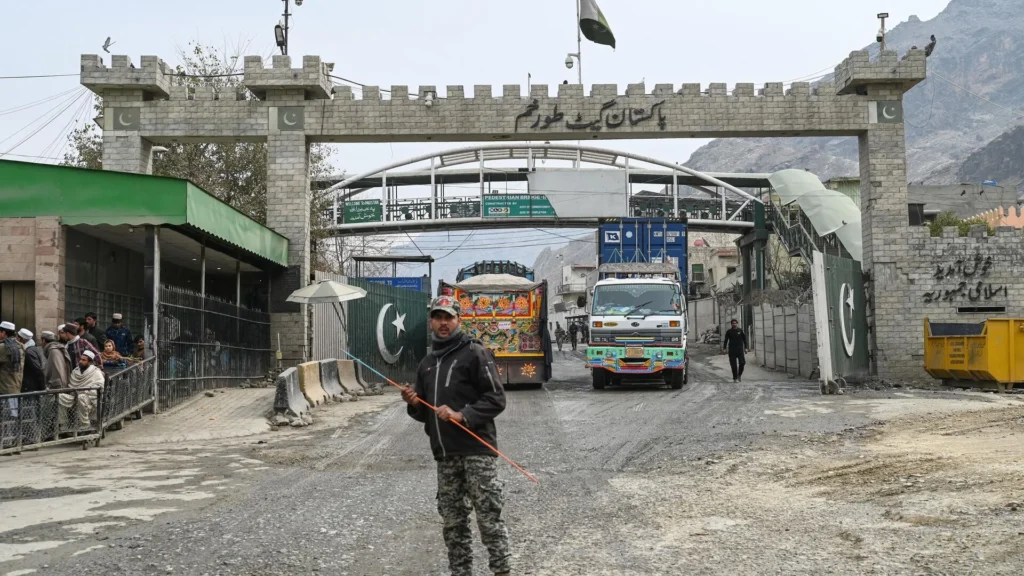After weeks of escalating tension and border closures, Pakistan and Afghanistan have agreed to reopen key crossings in a cautious move toward de-escalation. This decision follows diplomatic efforts and a conditional ceasefire aimed at restoring trade, easing humanitarian strain, and reducing regional volatility.
While the reopening offers a glimmer of hope, it remains a delicate step, underscored by unresolved security concerns and fragile trust between the two governments. As trucks begin to roll and families reunite, the region watches closely, knowing that true stability will require more than open gates; it will demand sustained dialogue, cooperation, and mutual restraint.
Background: A Border Marked by Tension
The Pakistan-Afghanistan border, particularly at the Torkham and Chaman crossings, has long been a flashpoint for geopolitical friction, economic disruption, and humanitarian strain. In October 2025, tensions escalated dramatically when coordinated attacks by Afghan Taliban militants and affiliated groups targeted multiple Pakistani border posts.
In response, Pakistan shut down both crossings, halting trade and stranding thousands of civilians on either side. This closure not only disrupted regional commerce but also deepened mistrust between the two governments. The border, which serves as a lifeline for trade, transit, and family connections, became a symbol of deteriorating bilateral relations.
The Ceasefire and Reopening Agreement
After days of diplomatic engagement and mediation, reportedly involving Qatar and Turkiye, both countries agreed to a ceasefire and a phased reopening of the border. Officials confirmed that the crossings would resume operations within 24 to 48 hours, provided no new disputes arise. This decision marks a cautious but meaningful step toward restoring normalcy. It reflects a mutual understanding that prolonged closure benefits neither side and that dialogue, however fragile, is preferable to confrontation.
Economic Lifeline Restored
The border reopening is expected to revive critical trade routes that had been paralyzed for over a week. The Chaman–Spin Boldak crossing, partially reopened for trade, has already begun allowing empty trucks into Afghanistan under strict supervision. Afghan drivers must present valid passports and visas, and general foot traffic remains restricted due to ongoing security concerns.
For Pakistan, the border trade is vital for exporting goods to Central Asia and importing agricultural products. For Afghanistan, it’s a lifeline for essential supplies, fuel, and food. The shutdown had caused severe shortages and price hikes, particularly in border provinces.
Strategic Implications
Beyond economics, the reopening carries strategic weight. It signals a willingness, however tentative, by both governments to de-escalate and engage. For Pakistan, maintaining stability along its western frontier is crucial, especially amid its broader security operations and refugee repatriation efforts. Over 67,000 Afghan refugees were returned in October alone, with more expected before the November deadline.
For Afghanistan’s Taliban-led administration, reopening the border is a chance to demonstrate diplomatic maturity and avoid further isolation. It also helps ease internal pressure from traders, transporters, and civilians affected by the closure.
Fragile Peace or Turning Point?
While the reopening is welcome, it remains precarious. The ceasefire agreement is conditional, and any new provocation could reverse progress. The underlying issues, cross-border militancy, refugee flows, and political mistrust, have not been resolved. Moreover, the border remains militarized, and surveillance has intensified. The reopening is not a return to normal but a controlled easing of restrictions. Both sides must now navigate a delicate balance between security and cooperation.
Voices from the Ground
Civilians living near the border have expressed cautious optimism. Traders hope to recover lost revenue, and families separated by the closure are eager to reunite. However, many remain skeptical, fearing that the peace may be short-lived. Local officials have urged both governments to establish clearer protocols for border management and conflict resolution. Without institutional mechanisms, future clashes could once again spiral into shutdowns and standoffs.
The Road Ahead
The reopening of the Pakistan-Afghanistan border is not just a logistical move; it’s a test of political will. It offers both countries a chance to rebuild trust, stabilize trade, and reduce the risk of further conflict. But it also demands vigilance, diplomacy, and a commitment to long-term solutions. If managed wisely, this moment could mark the beginning of a more constructive phase in bilateral relations. If mishandled, it could become yet another missed opportunity in a region that desperately needs peace.
Also Read: Unmasking the Afghan-TTP Alliance and Its Impact on Pakistan’s Security



